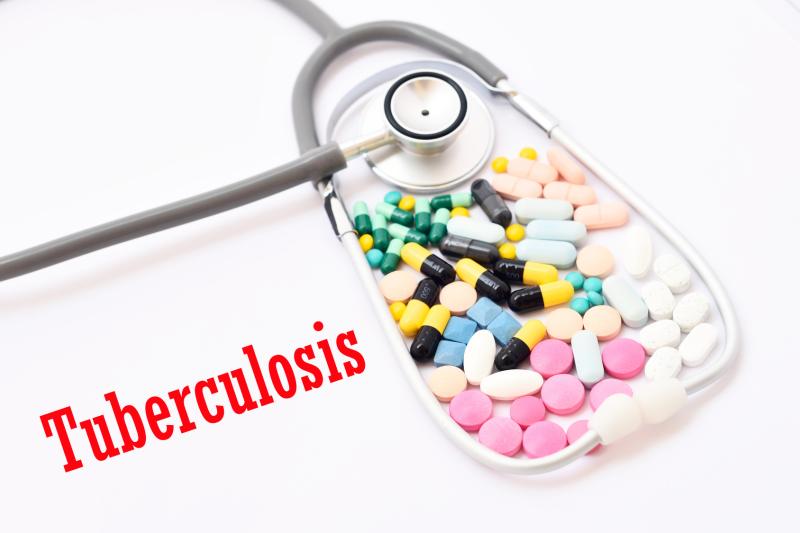
Use of appropriate antibiotics for just 4 months, 2 months, or even 7 days in the management of tuberculosis (TB) should be cost-effective and lead to better disease control, especially in settings with high incidence rates and poor treatment outcomes, as shown in a recent study from Taiwan.
The current standard first-line antibiotic treatment for TB is a 6-month combination regimen containing rifampin, isoniazid, pyrazinamide, and ethambutol. Its long duration, however, is a major barrier to adherence, which negatively influences TB control. Meanwhile, shortening regimens have the potential to improve outcomes by increasing treatment adherence and cutting time to cure, as well as to reduce costs incurred by patients. [Int J Tuberc Lung Dis 2014;18:810-817; J Bras Pneumol 2020;46:e20200009]
“[The present] study developed a population model-based cost-effectiveness analysis to assess the epidemiological impact and cost-effectiveness of the introduction of hypothetical [shorter] regimens in high TB burden regions of Taiwan,” the investigators said.
They considered three hypothetical shorter treatment courses, namely 4-month, 2-month, and 7-day regimens, which were patterned after novel regimens being studied by the TB Alliance and other research institutes. Discount rates of 0 percent and 3 percent over time were used to project county-specific TB dynamics, such as new cases, mortality cases, incidence rates, and mortality rates by 2050. Furthermore, the likely incremental cost-effectiveness ratio (ICER) and net monetary benefits (NMB) were calculated by using disability adjusted life years (DALY) as an effectiveness indicator. [https://www.tballiance.org/portfolio/regimens; https://clinicaltrials.gov/ct2/home]
When assuming a 3-percent discount rate and a willingness-to-pay (WTP) threshold of US $22,561, shorter regimens would cut incidence rates by about 19–33 percent and mortality cases by an average of 27–41 percent in high TB burden regions by 2050 as compared with the standard 6-month treatment course. [Int J Infect Dis 2020;doi:10.1016/j.ijid.2020.05.082]
Notably, both the 2-month and 7-day regimens would be more cost-effective than the 4-month regimen. The threshold daily drug prices for achieving cost-effectiveness and cost-saving were US $70 for the 7-day, $2 for the 2-month, and $1 for the 4-month regimen.
Results for the epidemiological benefits and cost-effectiveness of shorter regimens were similar at a discount rate of 0 percent.
“[S]horter regimens are likely to have greater epidemiological impacts in settings with high rates of incidences and poor treatment outcomes, which is similar to the finding in [another study]. The benefits of shorter regimens appear to be attributable to the direct impacts on improved treatment outcomes due to accelerated treatment completion, and indirect impacts of reducing transmission due to shortened duration of infectiousness for treated patients,” the investigators pointed out. [PLoS ONE 2014;9:e96389; PLoS Med 2006;3:e273]
In terms of cost-effectiveness, the World Health Organization (WHO) suggested that such interventions representing good value for money are those that cost less than three times GDP per capita for each DALY averted. [https://apps.who.int/iris/bitstream/handle/10665/42510/WHR_2002.pdf;jsessionid=C0F239B5BAFBB3FA27E7C7AB029999DF?sequence=1]
“Although no WTP threshold is universally accepted in Taiwan [thresholds used ranged 0.5–3 times GDP per capita], our sensitivity analysis demonstrated that the cost-effectiveness of shorter regimens would remain, even if the WTP threshold was <1 × GDP per capita. These potential benefits are important in light of the WHO’s End TB Strategy’s target of no affected families facing catastrophic costs due to TB,” they explained, emphasizing that shortened regimens could reduce out-of-pocket expenses for patients and facilitate earlier return to productive activities. [Int J Tuberc Lung Dis 2014;18:810-817]
“Despite [the presence of] limitations, our results support the inclusion of shorter regimens in global guidelines and regional-scale TB control strategies,” the investigators said.